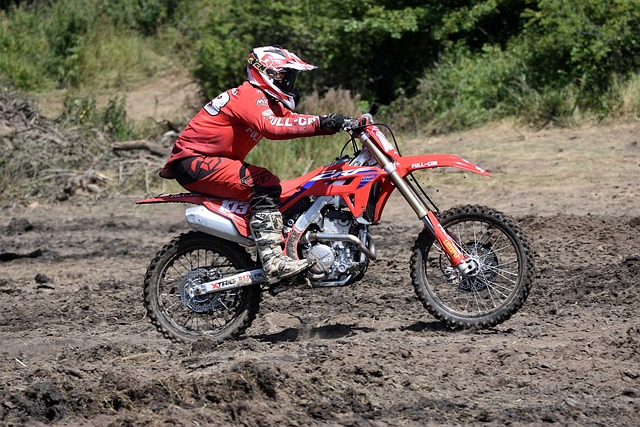When athletes and fitness enthusiasts talk about progress, they often focus on a single discipline—running, weightlifting, cycling, or yoga. Yet the most consistent performers understand that diversification, or what we call cross training, unlocks hidden layers of strength, stamina, and resilience. This article dives into why cross training matters, how it amplifies overall fitness, and practical ways to weave it into your routine.
The Core Principle of Cross Training
Cross training is the strategic inclusion of varied movement patterns and energy systems to complement your primary activity. Rather than overloading a single muscle group or joint, cross training spreads the load, promotes balanced muscular development, and mitigates injury risk. In essence, it’s a holistic approach that treats the body as an integrated system.
Three Pillars: Strength, Endurance, and Mobility
Across disciplines, the same three pillars drive long‑term improvement:
- Strength – the capacity to generate force. Adding resistance work ensures muscles grow, tendons strengthen, and joint stability increases.
- Endurance – the ability to sustain activity. Aerobic or interval sessions raise cardiovascular efficiency and delay fatigue.
- Mobility & Flexibility – the range of motion and joint health that enable efficient movement patterns and reduce injury propensity.
Cross training naturally covers all three, even if your primary sport is highly specific.
How Cross Training Enhances Strength
Strength gains are often limited by muscle adaptation and neurological patterns. By alternating between power, hypertrophy, and functional movements, you stimulate different fiber types and neural pathways.
- Power Workouts – Plyometrics, Olympic lifts, or kettlebell swings focus on explosive force, improving recruitment of fast‑twitch fibers.
- Hypertrophy Sessions – Traditional weightlifting with moderate rep ranges increases muscle cross‑sectional area, creating a stronger foundation for sport‑specific actions.
- Body‑weight Functional Movements – Push‑ups, pull‑ups, and farmer’s walks integrate core stability and joint control, translating into better performance during your main sport.
When the nervous system is challenged in multiple ways, it adapts more robustly, leading to higher overall strength ceilings.
Endurance Gains Through Varied Modalities
Endurance is not merely about heart rate or lung capacity; it’s about muscular endurance, lactate threshold, and recovery speed. Cross training injects variety that sharpens each of these components.
- Low‑Intensity Steady State (LISS) – Steady rowing or brisk cycling sessions improve mitochondrial density without overtaxing the nervous system.
- High‑Intensity Interval Training (HIIT) – Short bursts of speed or resistance drills push the lactate threshold higher, allowing longer periods of hard effort.
- Active Recovery – Light mobility work or low‑impact swimming helps remove metabolic waste while maintaining circulation.
By rotating these modalities, you train the body to utilize oxygen more efficiently and recover faster, key factors for endurance sports.
Mobility & Injury Prevention: The Often Overlooked Aspect
Many athletes view mobility as a “nice to have” rather than a necessity. However, restricted range of motion can cause compensations that lead to chronic injuries. Cross training addresses this by incorporating:
- Dynamical Stretching – Leg swings, arm circles, and hip circles before activity prime joints for movement.
- Static Stretching & Foam Rolling – Post‑workout practices ease muscle tension and enhance tissue pliability.
- Yoga or Pilates Sessions – These disciplines focus on core strength, balance, and breath control, all of which contribute to long‑term joint health.
Regular mobility work not only reduces injury risk but also improves performance by allowing more efficient movement patterns.
Sample Weekly Cross Training Schedule
Below is a balanced example that blends a primary sport (running) with complementary activities. Adjust intensity and volume based on your goals and recovery capacity.
| Day | Activity | Focus |
|---|---|---|
| Mon | Long Run (70‑80 min) | Endurance |
| Tue | Upper‑Body Strength Circuit | Strength & Hypertrophy |
| Wed | Rest or Gentle Yoga | Mobility |
| Thu | HIIT Rowing (10 × 30s) | Endurance & Power |
| Fri | Core & Balance (Pilates) | Stability |
| Sat | Tempo Run (45 min) | Speed & Threshold |
| Sun | Active Recovery (light swim) | Recovery |
Notice how each day targets a different pillar, ensuring that the body is never overloaded in a single area.
Key Principles for Successful Cross Training
While variety is crucial, execution matters. Follow these principles to reap maximum benefits:
- Progressive Overload – Gradually increase load, volume, or intensity across all modalities.
- Periodization – Cycle through phases: base building, strength, peak, and recovery to avoid plateaus.
- Listen to Your Body – Adjust training based on soreness, sleep quality, and mood.
- Consistent Recovery – Prioritize sleep, nutrition, and active recovery days to sustain progress.
- Integrated Skill Development – Include sport‑specific drills within cross training to translate gains directly.
Adhering to these guidelines ensures that cross training remains a catalyst, not a hindrance.
Common Misconceptions About Cross Training
Despite its proven benefits, several myths can derail an athlete’s plan:
- “Cross training dilutes focus.” In reality, diverse stimuli improve overall performance and reduce monotony.
- “You need to master every discipline.” A basic competence in each area is sufficient; depth can come later.
- “More training equals better results.” Quality trumps quantity; overtraining often stalls progress.
Dispel these myths to open the door to a more balanced, effective training paradigm.
Scientific Backing for Cross Training
Research consistently demonstrates cross training’s advantages. Studies on athletes who incorporated strength training alongside endurance workouts show:
- Higher VO₂max values compared to endurance‑only groups.
- Reduced injury incidence, particularly lower‑body strains.
- Improved lactate clearance, allowing sustained higher intensity.
These findings underscore that cross training isn’t a trend—it’s a scientifically validated approach to elite performance.
Practical Tips for Beginners
Starting a cross training program can feel overwhelming. Here are actionable steps to ease the transition:
- Identify one strength exercise that targets the major muscle groups used in your main sport.
- Schedule a single HIIT session per week, no longer than 20 minutes.
- Incorporate dynamic stretching before every workout and static stretching afterward.
- Track progress with simple metrics: weight lifted, time per mile, or heart rate zones.
- Join a local class or use online resources for guidance and community support.
Consistency, rather than intensity, is the key to long‑term adherence.
Conclusion: The Holistic Edge
Cross training transforms a single‑discipline routine into a synergistic system that fuels strength, endurance, and overall fitness. By intentionally weaving varied movements, energy systems, and mobility practices into your schedule, you build a more resilient, versatile, and injury‑tolerant body. Whether you’re a competitive runner, a seasoned lifter, or someone simply aiming for a healthier lifestyle, the cross training mindset offers a roadmap to sustainable improvement. Start small, stay consistent, and watch as every new modality magnifies the gains from your primary sport.



